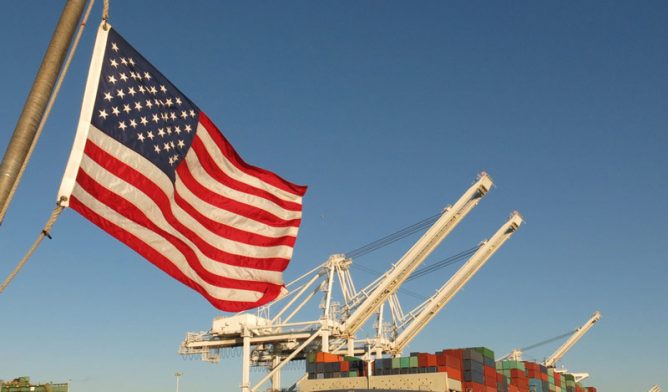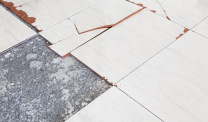US Asbestos Imports Dropped Significantly in 2019
Asbestos Exposure & BansWritten by Tim Povtak | Edited By Walter Pacheco

Raw asbestos imported to the United States dropped significantly in 2019, according to the recently released U.S. Geological Survey Mineral Commodity Summaries report.
The U.S. imported an estimated 100 metric tons of asbestos last year. It’s the smallest amount since records were first kept in 1910, long before the mineral became a major part of the construction industry in America.
That number is in sharp contrast to the 681 metric tons imported in 2018.
All imported asbestos went to the chloralkali industry — for the second consecutive year — to use in the manufacturing of semipermeable diaphragms for making chlorine.
There are 11 chloralkali factories throughout the country using asbestos diaphragms. They account for one-third of domestic production of chlorine.
According to the report, “a small but unknown amount of asbestos” also was imported for various products, including vehicle friction items, brake blocks for the oil industry and materials used in the production of titanium dioxide.
“The decline has taken place as a result of health and liability issues associated with asbestos use, leading to the displacement of asbestos from traditional domestic markets by substitutes, alternative materials and new technology,” the report summarized.
Daniel Flanagan, a mineral commodity specialist for the National Minerals Information Center, which is part of the U.S. Department of the Interior, prepared the annual report.
All Imported Asbestos Came from Russia
In recent years, asbestos imports ranged from a high of 772 tons in 2013 to a low of 325 tons in 2015.
Last year, asbestos imports for 2018 were estimated at 750 tons, but that figure was revised to 681 tons in the latest report. The estimated 100 tons imported in 2019 also could be revised in the coming months.
All imported asbestos in 2019 was the chrysotile type and came from Russia, the world’s largest producer of the mineral.
Recent U.S. consumption of raw asbestos:
| Year | Metric Tons |
|---|---|
| 2010 | 1,040 |
| 2011 | 1,180 |
| 2012 | 1,610 |
| 2013 | 772 |
| 2014 | 406 |
| 2015 | 325 |
| 2016 | 747 |
| 2017 | 332 |
| 2018 | 681 |
| 2018 | 100 |
Domestic consumers have been dependent on imports of asbestos since 2002, when the last asbestos mine in the U.S. was closed.
The naturally occurring mineral was once highly coveted for its versatility, flexibility, heat resistance and strength. At its peak, asbestos products were used as a staple in both residential and commercial construction.
Asbestos was found to be toxic if its microscopic fibers are inhaled or ingested, leading to serious health problems, including mesothelioma and lung cancer.
Asbestos Is Tightly Regulated Today
Consumption of raw asbestos in the U.S. — which includes both imported and domestic — was highest in the 1950s through the 1970s.
It ranged from a low of 551,000 tons in 1979 to a high of 803,000 tons in 1973.
U.S. consumption today is less than .1% of its high. Although asbestos has not been banned completely in the U.S., it is tightly regulated.
The biggest threat to the public is not from imported asbestos — which is all used in the chloralkali industry — but from legacy asbestos that remains from decades of unbridled use.
As asbestos products age and are disturbed, they can send toxic fibers into the air, threatening those in the area and causing considerable concern.
As an example, 11 older schools in Philadelphia were either fully or partially closed between October and February for remediation of damaged asbestos materials.
It was estimated that 80% of the schools in Philadelphia were built before 1978, when asbestos use was near its peak. The Philadelphia School District is expected to spend more than $14 million in renovations.
An estimated 10,000 people in the U.S. die annually from asbestos-related diseases, with most health issues related to exposure decades ago. With mesothelioma cancer, the latency period between exposure and diagnosis is 20 to 50 years.
Despite the significant drop in asbestos imports, legislative efforts to completely ban asbestos are still being pushed in Congress.
H.R.1603, the latest bill before the Senate and the House of Representatives, would amend the current Toxic Substances Control Act to prohibit the manufacture, processing and distribution of asbestos and asbestos-containing products.
Similar bills throughout the past two decades were introduced but failed to advance.
In June 2019, the Environmental Protection Agency did issue a Significant New Use Rule that amended the Toxic Substances Control Act. The rule prohibits the restarting of any previously discontinued uses of asbestos without EPA review and consent.
The most outspoken critic of any legislation that includes an outright ban is the chloralkali industry, which already is highly regulated and would be left without affordable alternatives to manufacture chlorine.
Most other industries have replaced asbestos with new materials and technology.






